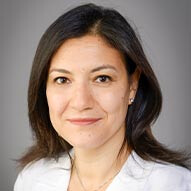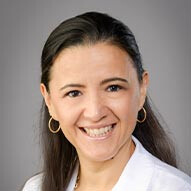Pediatric lactose intolerance
A child with lactose intolerance (lac·tose - in·tol·er·ance) experiences diarrhea, gas, bloating and other digestive distress after eating dairy products.
What is pediatric lactose intolerance?
A child is lactose intolerant when the small intestine doesn’t produce sufficient amounts of an enzyme – called lactase – that the body requires to digest the lactose.
Lactose is the sugar found in milk and other milk-containing products, including cheese, yogurt and ice cream.
Children who are said to be lactose intolerant cannot process this sugar and, therefore, experience a range of uncomfortable digestive problems after eating these foods and drinks.
What are the different types of pediatric lactose intolerance?
There are three types of lactose intolerance:
Congenital lactose intolerance are babies who are born with lactose intolerance. Rarely, a baby is born with congenital lactose intolerance. For this to occur, both the mother and father must pass on the same gene variant that affects lactase production.
Primary lactose intolerance are adults who were able to consume dairy products as a child, but later develop problems digesting lactose due to reduced lactase levels with age.
Secondary lactose intolerance is when lactase production is decreased following an illness, injury or surgery that involves the small intestine.
What are the signs and symptoms of pediatric lactose intolerance?
Bloating
Cramps in the abdomen
Gas
What are the causes of pediatric lactose intolerance?
Usually, a decrease in lactase production is caused over time, as in primary or secondary lactose intolerance.
Pediatric lactose intolerance doctors and providers
 Bradley Barth, MDPediatric Gastroenterologist
Bradley Barth, MDPediatric Gastroenterologist Michele Alkalay, MDPediatric Gastroenterologist
Michele Alkalay, MDPediatric Gastroenterologist Amal Aqul, MDPediatric Hepatologist
Amal Aqul, MDPediatric Hepatologist Sarah Barlow, MDPediatric Gastroenterologist
Sarah Barlow, MDPediatric Gastroenterologist Nandini Channabasappa, MDPediatric Gastroenterologist
Nandini Channabasappa, MDPediatric Gastroenterologist Aakash Goyal, MDPediatric Gastroenterologist
Aakash Goyal, MDPediatric Gastroenterologist Bhaskar Gurram, MDPediatric Gastroenterologist
Bhaskar Gurram, MDPediatric Gastroenterologist Lauren Lazar, MDPediatric Gastroenterologist
Lauren Lazar, MDPediatric Gastroenterologist Megha Mehta, MDPediatric Gastroenterologist
Megha Mehta, MDPediatric Gastroenterologist Derek Ngai, MDPediatric Gastroenterologist
Derek Ngai, MDPediatric Gastroenterologist Charina Ramirez, MDPediatric Gastroenterologist
Charina Ramirez, MDPediatric Gastroenterologist Norberto Rodriguez-Baez, MDPediatric Hepatologist
Norberto Rodriguez-Baez, MDPediatric Hepatologist Isabel Rojas Santamaria, MDPediatric Gastroenterologist
Isabel Rojas Santamaria, MDPediatric Gastroenterologist Rinarani Sanghavi, MDPediatric Gastroenterologist
Rinarani Sanghavi, MDPediatric Gastroenterologist Meghana Sathe, MDPediatric Gastroenterologist
Meghana Sathe, MDPediatric Gastroenterologist Mhammad Gaith Semrin, MDPediatric Gastroenterologist
Mhammad Gaith Semrin, MDPediatric Gastroenterologist Luis Sifuentes-Dominguez, MDPediatric Gastroenterologist
Luis Sifuentes-Dominguez, MDPediatric Gastroenterologist David Troendle, MDPediatric Gastroenterologist
David Troendle, MDPediatric Gastroenterologist Phuong Luu, PA-CPhysician Assistant - Gastroenterology
Phuong Luu, PA-CPhysician Assistant - Gastroenterology Van Nguyen, APRN, PNP-PCNurse Practitioner - Gastroenterology
Van Nguyen, APRN, PNP-PCNurse Practitioner - Gastroenterology Jennifer Peacock, APRN, PNP-PCNurse Practitioner - Gastroenterology
Jennifer Peacock, APRN, PNP-PCNurse Practitioner - Gastroenterology Shabina Walji-Virani, APRN, PNP-PCNurse Practitioner - Gastroenterology
Shabina Walji-Virani, APRN, PNP-PCNurse Practitioner - Gastroenterology Christine Winser-Bean, APRN, FNPNurse Practitioner - Gastroenterology
Christine Winser-Bean, APRN, FNPNurse Practitioner - Gastroenterology